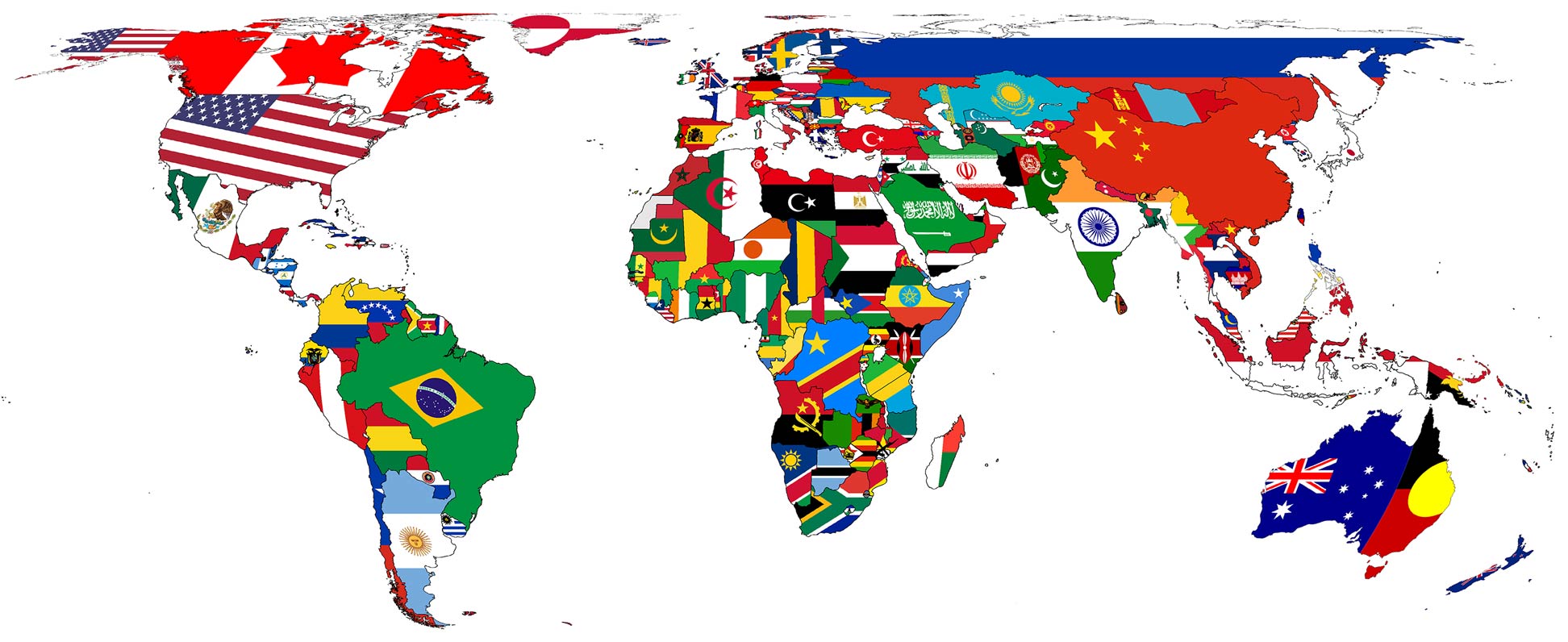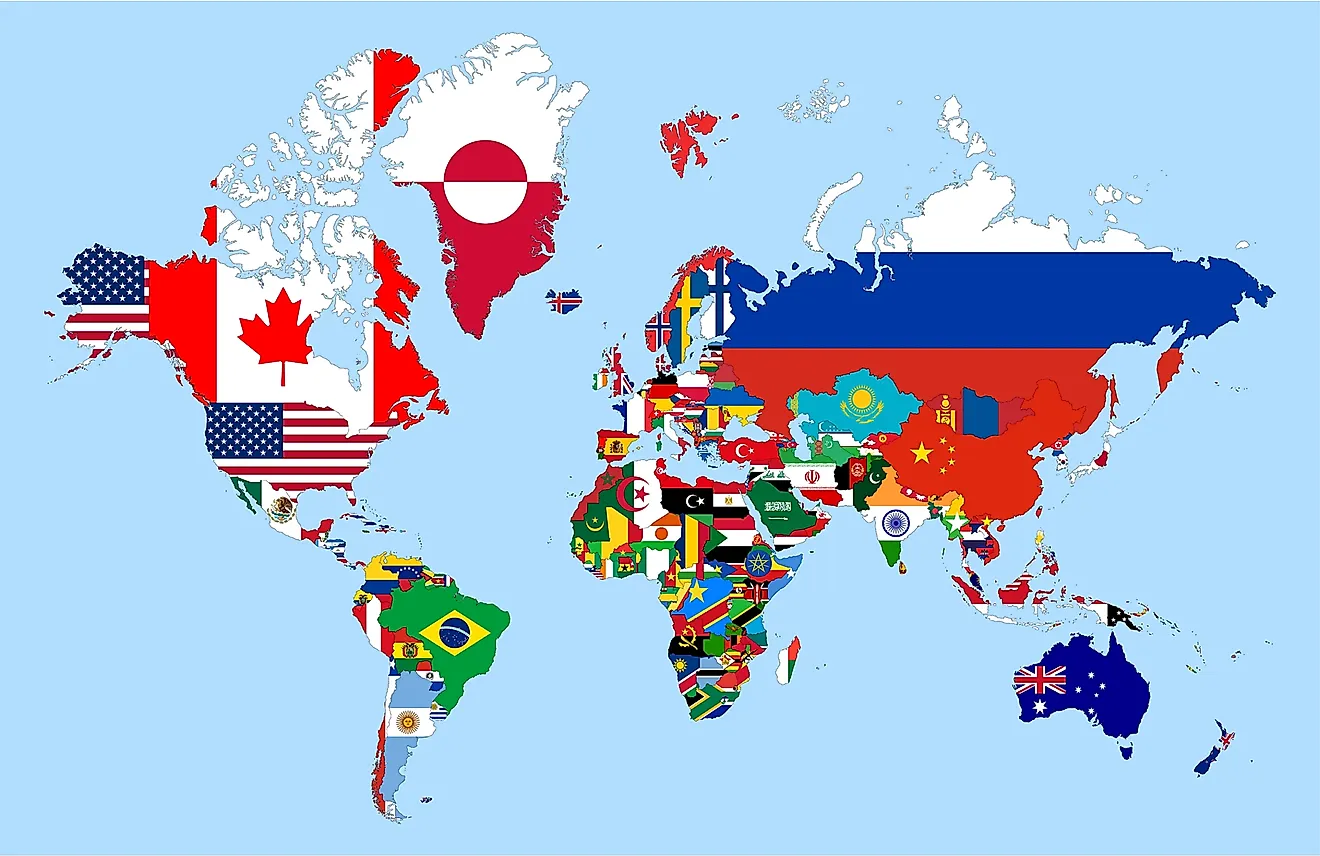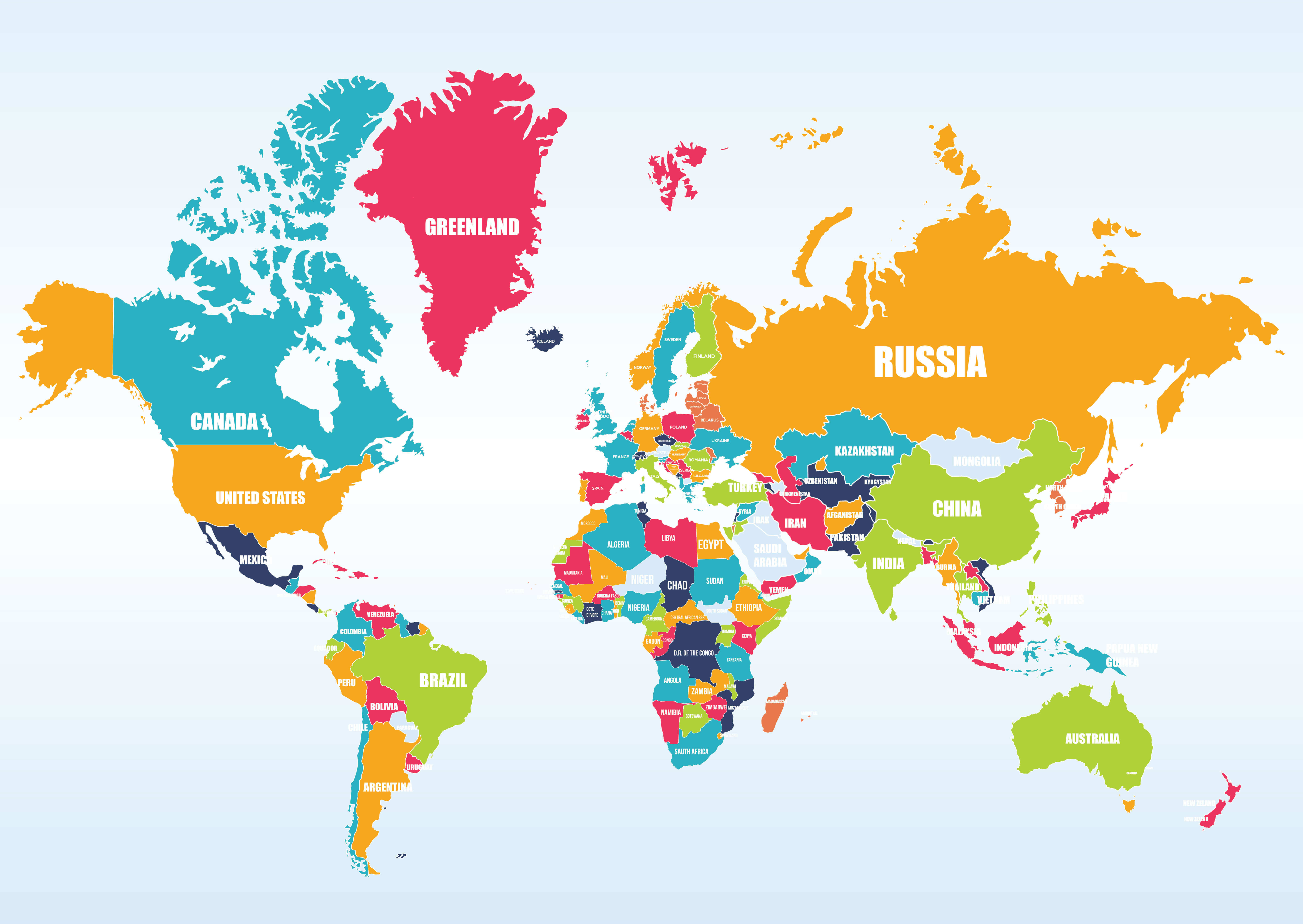It's pretty fascinating to consider the diverse ways people live across our planet, and how different communities come together in various places. When we think about global populations, sometimes we wonder about the makeup of specific religious groups and where they are most concentrated. Today, we are going to talk a bit about Shia Muslims, a significant part of the world's Islamic community.
You know, Islam, as a faith, touches so many parts of the globe, with followers living in countless nations. But, actually, within Islam, there are some distinct branches, and these branches often have different patterns of population distribution. It's not always just one large, uniform group spread evenly everywhere, which is quite interesting to learn about.
So, we're going to take a closer look at where Shia Muslims form a large part of the population, even a majority in some places. We'll explore some of the key regions and countries where this particular group of Muslims is most present, using some general global statistics and population information to guide us. It's like, we're just trying to get a clearer picture of how things are arranged on the world map for this community.
Table of Contents
- What Countries Have a Shia Muslim Majority Population?
- Where Do Many Shia Muslims Live in the World?
- How Are Shia and Sunni Muslims Distributed Across Countries?
- What Are the Main Branches of Shia Islam?
- Shia Muslim Population Numbers Across Countries
- Shia Muslim Presence in Other Countries
- The Global Shia Muslim Population
What Countries Have a Shia Muslim Majority Population?
It's interesting to consider that Shia Muslims actually make up the majority of people in three different countries across the Muslim world. This is a pretty important point when we think about the overall population distribution. These are places where, basically, more than half of the people who live there are followers of Shia Islam, which is quite significant for those nations and their cultural fabric, too.
One of these key countries is Iran, which is, you know, often thought of as the main Shia country. It's also seen as a leading place for Shia Islam on a global scale. In Iran, the vast majority of the population, roughly ninety percent, identifies as Shia Muslim. This makes it a very prominent example of a nation with a strong Shia majority, and it's something that truly shapes the country's identity, as a matter of fact.
Then there is Azerbaijan, another country where Shia Islam forms the majority of the population. About seventy-five percent of the people in Azerbaijan are Shia Muslims. This means that, similarly to Iran, a significant portion of its citizens belong to this particular branch of Islam. It's clear that these two countries, Iran and Azerbaijan, stand out quite a bit when we look at the concentration of Shia populations globally, actually.
And then, you have Iraq, where Shia Muslims are also a numerical majority. This means that, when you count up the people in Iraq, more Shia Muslims live there than members of any other group. So, when we talk about countries with Shia Muslim majority population, Iraq definitely comes into the picture as well. These three nations really show us where Shia Islam has a very strong demographic presence, which is, in a way, a key piece of information.
Where Do Many Shia Muslims Live in the World?
Beyond those countries where Shia Muslims are the majority, there are also many places where large numbers of Shia Arab Muslims live, even if they don't form the overall majority of the population. These communities are quite important to the social makeup of those regions. For instance, in some Arab countries, you find very sizable groups of Shia Muslims, and their presence is a notable part of the local scene, too.
To give you some examples, countries like Lebanon, Yemen, Bahrain, Iraq (which we mentioned as a majority country, but also has a large Shia Arab population), Saudi Arabia, Kuwait, Oman, the United Arab Emirates, and Qatar all have significant numbers of Shia Arab Muslims living within their borders. It's like, these communities are spread out across the Middle East, making up a vital part of the regional population, you know.
In Yemen, for instance, a good portion of the people, about thirty-five percent, are Shia Muslims. This is a pretty substantial number, making them a very important part of the country's population. Similarly, in Bahrain and Lebanon, nearly half of the Muslim residents are Shia Muslims. So, while they might not be the absolute majority of the entire country, they are certainly a very large and influential group within the Muslim population there, which is quite telling, as a matter of fact.
We also find very large groups of Shia Muslims living in the Persian Gulf countries, particularly in Saudi Arabia. This is another area where, even though the overall country might not be Shia majority, the number of Shia Muslims living there is quite considerable. It shows that the distribution of Shia Muslims is not just about majority countries, but also about where large communities have historically settled, too, you know.
Looking a bit wider, the largest Shia populations are found in places like Iran, Iraq, Pakistan, India, Azerbaijan, Lebanon, Bahrain, and Yemen. This list shows a broader spread of countries where Shia communities are particularly numerous. So, it's not just the Middle East; you see significant numbers in South Asia as well. This gives us a fuller picture of where these communities are concentrated around the world, as a matter of fact.
And it's also worth noting that Shia Muslims make up about twenty percent of the population in both Syria and Turkey. So, while these countries are often associated with other Muslim branches, there's a notable Shia presence there too. This just goes to show that, like, Shia Muslims live in many, many countries, and their presence varies in size from one place to another, which is quite interesting to learn about, isn't it?
How Are Shia and Sunni Muslims Distributed Across Countries?
Basically, Shia Islam and Sunni Islam are the two main branches of the faith. They both share the core beliefs of Islam, but they have developed somewhat distinct historical, cultural, and theological identities over time. It's like, they are part of the same big family, but they have their own unique characteristics that set them apart a little bit, you know.
When we look at how these two branches are spread out, we see some clear patterns in different countries. For example, as we've talked about, Shia Muslims form the majority in countries like Iran, Iraq, Bahrain, and Azerbaijan. These are the places where the Shia branch is the most prominent in terms of population numbers, which is pretty clear to see.
Sunni Muslims, on the other hand, are the majority in many other countries. For instance, you find Sunni majorities in places like Saudi Arabia, Egypt, Turkey, and Indonesia. These nations have a very large number of Sunni followers, and their populations reflect this. So, it's a bit like a geographical division, where certain areas have a higher concentration of one branch over the other, too.
It's also worth pointing out that Indonesia is the country with the largest number of Muslims overall. It's home to over two hundred forty-two million Muslims, which is a truly huge number of people. While the majority of Muslims in Indonesia are Sunni, this fact just highlights the sheer scale of the Muslim population in some parts of the world, which is, you know, quite something to consider.
The way Shia and Sunni Muslim populations are spread out really does change quite a bit from one region to another. Some countries, for example, are more than ninety percent Muslim, and this includes nations like Egypt, Afghanistan, Syria, Pakistan, Turkey, and Iran. So, while Islam is the dominant religion in places like the Maldives, Afghanistan, Pakistan, and Bangladesh, the specific branch that makes up the majority can vary, which is pretty important to understand, you know.
Generally speaking, any country where Muslims make up fifty percent or more of the population is considered a Muslim majority country. This is a straightforward way to categorize nations based on their religious demographics. So, when we talk about the distribution of Shia and Sunni Muslims, we are essentially looking at how these two very large groups are spread out within these Muslim majority countries and beyond, too.
What Are the Main Branches of Shia Islam?
So, when we talk about Shia Islam, it's good to know that there are, you know, a few main branches that are recognized. These are the different ways Shia Muslims understand and practice their faith, and they each have their own particular characteristics. It's a bit like different schools of thought within a broader tradition, which is pretty common in many religions, actually.
The three main Shia branches are Twelverism, Isma'ilism, and Zaydism. These names represent different historical lines of leadership and theological interpretations within Shia Islam. Each branch has its own specific traditions and ways of doing things, which is what gives Shia Islam its deep historical, cultural, and theological identity, quite distinct from other branches of Islam, you know.
Twelverism is, arguably, the largest and most widely followed branch of Shia Islam. Many of the Shia populations we've discussed, especially in Iran and Iraq, would typically fall under this branch. Isma'ilism and Zaydism are also important, but they represent smaller, though still significant, communities within the broader Shia Muslim world. It's really quite interesting how these different interpretations have developed over time, as a matter of fact.
While the provided text doesn't go into the specific details of each branch's beliefs or practices, it's important to simply recognize that these distinctions exist. It helps us to have a fuller picture when we talk about Shia Muslim populations, because it's not just one single, uniform group, but rather a collection of related communities with shared roots and distinct paths, too.
Shia Muslim Population Numbers Across Countries
When we look at the numbers, it helps to paint a clearer picture of where Shia Muslims are most concentrated. For instance, in Iran, as we mentioned, a very large ninety percent of the population is Shia. This is, you know, a really high percentage, making Iran a predominantly Shia nation. It's a key piece of information for understanding the religious makeup of that country, too.
Similarly, Azerbaijan has a significant Shia majority, with about seventy-five percent of its people identifying as Shia Muslim. This also puts Azerbaijan firmly in the category of countries with a large Shia Muslim population. These figures, you know, give us a good sense of the demographic weight of Shia Islam in these particular nations, which is quite important.
In Iraq, Shia Muslims are a numerical majority. This means that, when you count all the people in Iraq, more of them are Shia Muslims than any other group. So, while we might not have a precise percentage given for Iraq in this context, the fact that they are the numerical majority is a very strong indicator of their significant presence there, as a matter of fact.
Moving to Yemen, approximately thirty-five percent of the population is Shia Muslim. This is a substantial minority, making them a very important community within the country. And in both Bahrain and Lebanon, nearly half of the Muslim population consists of Shia Muslims. This shows that, even if they aren't the overall majority of the entire country's population, they are a very large and influential part of the Muslim community in those places, which is quite something to consider, you know.
And then, we have Syria and Turkey, where Shia Muslims make up around twenty percent of the population in each country. This indicates a notable Shia presence, even though they are not the majority. These numbers, too, help us to appreciate the varied distribution of Shia Muslims across different nations, and how their proportion can differ quite a bit from one place to another, actually.
Shia Muslim Presence in Other Countries
You might wonder, what about places further afield, beyond the Middle East and parts of Asia? Well, Shia Muslims do live in many countries all around the world, not just in those regions where they form large majorities or significant minorities. Their presence, however, tends to be a relatively small percentage of the Muslim population in most other parts of the globe, which is, you know, quite a contrast to the numbers we've been discussing.
For example, in North America, it's estimated that about three hundred thousand Shia Muslims live there. This includes people in both the United States and Canada. This number makes up about ten percent of North America's total Muslim population. So, while it's a smaller proportion compared to countries like Iran or Azerbaijan, it's still a notable community that contributes to the diversity of the Muslim population in those nations, too.
The text suggests that Shia populations are smaller elsewhere in the world. This means that outside of the main areas we've talked about, the proportion of Shia Muslims within the overall Muslim community is generally less significant. It's like, the concentration really shifts once you move away from certain geographical hubs, which is pretty interesting to observe, as a matter of fact.
This wide distribution, even in smaller numbers, shows that Shia Islam is a global faith. It's not just confined to a few specific regions. People who follow Shia Islam have, you know, settled in various places, bringing their traditions and communities with them. So, while the numbers might be smaller in some areas, their presence is still a part of the global religious landscape, which is quite important to remember, actually.
The Global Shia Muslim Population
When you look at the bigger picture, it's clear that Shia Muslims are a significant part of the global Muslim community. Estimates suggest that there are somewhere between one hundred fifty-four million and two hundred million Shia Muslims in the world today. This is a pretty wide range, but it gives us a good idea of their overall numbers on a global scale, which is, you know, quite substantial.
To put this into perspective, Shia Muslims, also sometimes called Shiites or Shi'ites, make up about ten percent of the world's total Muslim population. As of 2023, the world's Muslim population is estimated to be between 1.8 billion and 2 billion people, according to the Associated Press. So, ten percent of that very large number is still a huge group of people, as a matter of fact.
It's also worth noting that, in the Middle East, Shia Muslims make up more than a third of the Muslim population. This is a very high concentration in that particular region, showing its importance as a center for Shia Islam. This figure, too, really highlights the demographic weight of Shia Muslims in a key part of the world, which is quite telling.
However, the rate of growth for the Shia population is expected to be slightly lower than the rate of growth for Sunni Muslims over the next twenty years. This suggests that, while the Shia population is still growing, the Sunni population might be expanding at a somewhat faster pace. It's an interesting projection about future demographic trends within the Muslim world, you know.
Of all the countries, Iran has the largest number of Shia Muslims. This isn't just about percentage; it's about the absolute count of people. So, while Azerbaijan has a high percentage, Iran simply has more Shia individuals living within its borders. This reinforces Iran's role as a major hub for Shia Islam globally, which is, you know, a pretty key takeaway from the data.
Related Resources:
Detail Author:
- Name : Prof. Blanche Lehner
- Username : kerluke.ali
- Email : lockman.dianna@hotmail.com
- Birthdate : 1992-11-11
- Address : 28612 Katherine Island East Destinee, RI 63369
- Phone : +1.205.863.7222
- Company : Kuhlman, Zieme and Bode
- Job : Probation Officers and Correctional Treatment Specialist
- Bio : Qui similique sed soluta fugit. Quos neque esse quo odit. Eum consequatur voluptatem earum aliquam soluta.
Socials
instagram:
- url : https://instagram.com/andreane_rempel
- username : andreane_rempel
- bio : Beatae et ab qui et labore. Laborum et nihil vero excepturi asperiores ducimus harum.
- followers : 4862
- following : 2097
tiktok:
- url : https://tiktok.com/@andreane_rempel
- username : andreane_rempel
- bio : Quidem quis laborum earum molestiae.
- followers : 863
- following : 1620
twitter:
- url : https://twitter.com/andreanerempel
- username : andreanerempel
- bio : Aut itaque consectetur et non inventore. Non architecto nam eveniet dolores voluptatem odio repudiandae.
- followers : 4195
- following : 228
linkedin:
- url : https://linkedin.com/in/rempela
- username : rempela
- bio : Vel velit distinctio qui et aperiam.
- followers : 2168
- following : 1766
facebook:
- url : https://facebook.com/andreane.rempel
- username : andreane.rempel
- bio : Omnis tempora quia totam. A et quis id harum ut ipsum illo.
- followers : 2960
- following : 506


